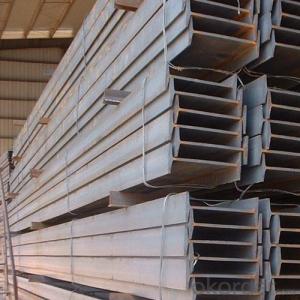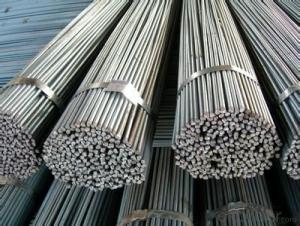Steel Square Bar with Length of 6M, 8M and 12M
- Loading Port:
- Tianjin
- Payment Terms:
- TT OR LC
- Min Order Qty:
- 25 m.t.
- Supply Capability:
- 1000 m.t./month
OKorder Service Pledge
OKorder Financial Service
You Might Also Like
1. Structure of Steel Square Bar with Length of 6M, 8M and 12M Description:
Steel square bar with length of 6M, 8M and 12M is a bar with square shaped cross-section. It is special case of equal sides. Before steel products are sold on the market, the steel must first be processed into more functional pieces. Raw steel cannot be of use while in its pure form, thus it has to be cast into shape. The freshly made steel, steel square bar with length of 6M, 8M and 12M is still in the form of a metal bar or rectangle. Small sizes of steel square bar with length of 6M, 8M and 12M are used in ship building.
2. Main Features of Steel Square Bar with Length of 6M, 8M and 12M :
• Grade: Q235
• Type: Mild carbon steel
• A quadrilateral with four equal sides and four right angles.
• Vibration: The stiffness and mass are chosen to prevent unacceptable vibrations, particularly in settings sensitive to vibrations, such as offices and libraries.
• Local yield: Caused by concentrated loads, such as at the beam's point of support.
3. Steel Square Bar with Length of 6M, 8M and 12M Images:
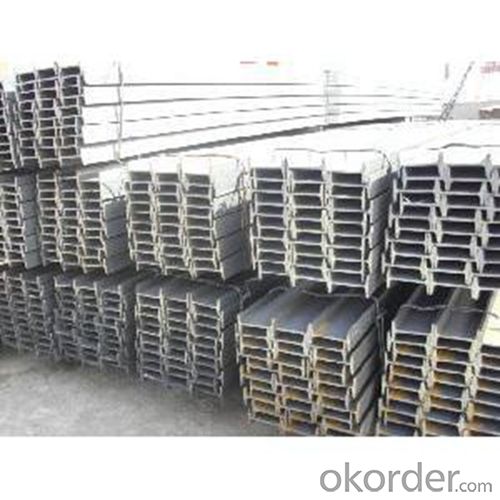
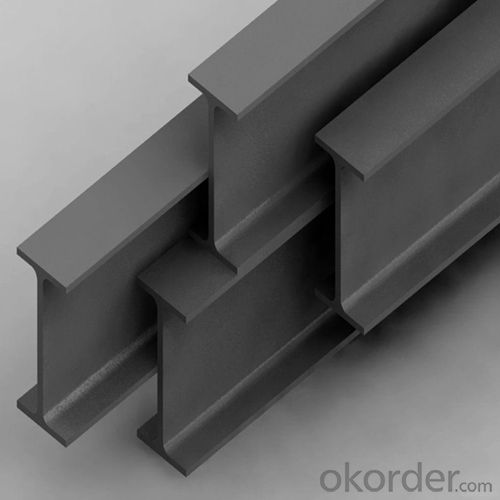
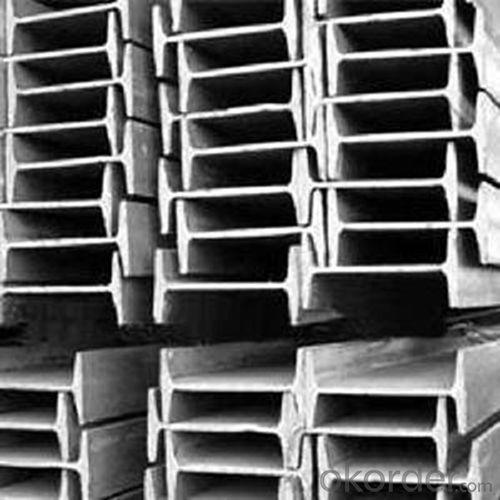
4. Steel Square Bar with Length of 6M, 8M and 12M Specification:
Mechanical Properties | Grade | Steel diameter(mm) | |||
≤16 | 16~40 | 40~60 | 60~100 | ||
Yield Point Δs/MPa | Q195 | ≥195 | ≥185 | - | - |
Q235 | 235 | 225 | 215 | 205 | |
Tensile Strength | Q195 | 315~390 | |||
Q235 | 375~500 | ||||
Elongation δ5% | Q195 | ≥33 | ≥32 | - | - |
Q235 | 26 | 25 | 24 | 23 | |
5. FAQ
We have organized several common questions for our clients,may help you sincerely:
①What is the main material?
There are two types of Square Bar, one is hot rolled square bar and other one is cold drawn square bar. Our principal products is hot rolled square bar. We dedicate to products with material Q195 and Q235. We offer products with high quality and low price.
②How to inspect the quality?
We have a professional inspection group which belongs to our company. We resolutely put an end to unqualified products flowing into the market. At the same time, we will provide necessary follow-up service assurance.
③Is there any advantage about this kind of product?
Steel I beam bar IPE has a reduced capacity in the transverse direction, and is also inefficient in carrying torsion, for which hollow structural sections are often preferred.
- Q:Can a steel square be used for creating dado joints?
- Yes, a steel square can be used for creating dado joints. A steel square is a versatile and accurate tool that can be used for a variety of woodworking tasks, including creating dado joints. The square can be used to mark out the correct width and depth of the dado joint, ensuring precise and accurate cuts. Additionally, the square can be used to align the saw blade or router bit to ensure the correct positioning of the dado joint. Overall, a steel square is a valuable tool for creating dado joints and can help achieve professional and precise results.
- Q:What are some common features of steel squares?
- Steel squares possess several common characteristics, including: 1. Material: Crafted from high-quality steel, these squares exhibit exceptional durability and strength. 2. Shape: Typically resembling a right-angled triangle, steel squares possess one elongated side and two shorter sides that form a perfect 90-degree angle. 3. Precision: Meticulously engineered, steel squares guarantee precise measurements and angles. Their edges and corners undergo meticulous machining to deliver consistent and accurate results. 4. Markings: Often adorned with markings along their edges, steel squares offer users the ability to measure and indicate specific lengths or angles. 5. Graduations: Some steel squares are embellished with engraved or printed scales, allowing for easier measurement of angles or distances. 6. Versatility: Steel squares serve a multitude of purposes, including measuring, marking, and verifying right angles, as well as determining and transferring angles. 7. Size and weight: Steel squares are available in various sizes, ranging from compact pocket-sized squares to larger ones designed for heavy-duty applications. The weight of a steel square varies depending on its size and thickness. 8. Corrosion resistance: To prolong their lifespan, steel squares are often treated or coated to enhance their resistance to rust and corrosion. 9. Stability: Engineered for stability and rigidity, steel squares provide a dependable reference point for precise measurements and layout work. 10. Multi-functionality: Certain steel squares may incorporate additional features, such as built-in spirit levels, scribing tools, or adjustable components, offering enhanced versatility and convenience for specific applications.
- Q:How do you use a steel square to measure and mark parallel lines?
- To use a steel square to measure and mark parallel lines, you need to align one edge of the square with the starting point of the line. Then, hold the square firmly in place and draw a line along the other edge of the square. Repeat this process at the desired interval to create parallel lines.
- Q:How do you use a steel square to mark a line perpendicular to an edge?
- To use a steel square to mark a line perpendicular to an edge, follow these steps: 1. Begin by placing the steel square on the edge of the material you want to mark. Ensure that one arm of the square is aligned with the edge of the material. 2. Hold the square firmly in place with one hand, making sure it doesn't move during the marking process. 3. With your other hand, take a pencil or marking tool and place it against the inside edge of the square's other arm. 4. While keeping the pencil in contact with the square, slide it along the inside edge of the square's arm, marking a line on the material. 5. Continue sliding the pencil along the inside edge until you reach the desired length of the perpendicular line. 6. Once you've marked the line, double-check that it appears perpendicular to the original edge by using a measuring tape or a second square. 7. If necessary, make any adjustments to ensure the line is perfectly perpendicular before proceeding with your project. By using a steel square in this manner, you can accurately mark a line that is perpendicular to an existing edge, ensuring precise and straight cuts or construction.
- Q:What are the common mistakes to avoid when using a steel square in construction?
- Some common mistakes to avoid when using a steel square in construction are not ensuring the square is properly aligned with the workpiece, not holding it securely, not using it to mark accurate measurements, and not verifying the squareness of corners.
- Q:Can a steel square be used for measuring the depth of a foundation?
- A foundation's depth can be measured using a steel square. The steel square, also referred to as a framing square or carpenter's square, is a versatile tool utilized in construction and carpentry for various measurement and layout tasks. It consists of a straight, long edge with a handle perpendicular to it, creating a right angle. To measure a foundation's depth using a steel square, position the square vertically against the foundation's side, ensuring that the long edge aligns with the foundation surface. By examining the markings or measurements on the square, you can determine the foundation's depth. Nevertheless, it is important to note that relying solely on a steel square may not provide precise measurements of the foundation's depth. While it can offer a rough estimate, for accurate results, specialized tools such as a tape measure or a laser level should be used in conjunction with the steel square. Additionally, it is advisable to consult a professional engineer or contractor for more accurate measurements and to ensure the foundation is properly evaluated for construction or renovation purposes.
- Q:How do you use a steel square to mark a line perpendicular to a board edge at a specific distance?
- To use a steel square to mark a line perpendicular to a board edge at a specific distance, follow these steps: 1. Place the steel square against the edge of the board, aligning one arm of the square with the edge. 2. Adjust the square until the other arm is perpendicular to the edge, forming a 90-degree angle. 3. Once the square is properly aligned, hold it firmly against the board to secure its position. 4. Determine the specific distance from the edge where you want to mark the line. For example, if you want the line to be 6 inches away from the edge, measure 6 inches from the edge using a tape measure or ruler. 5. Using a pencil or marking tool, make a mark on the board along the arm of the square that corresponds to the specific distance you measured. 6. Continue marking along the entire length of the board, ensuring that each mark is perpendicular to the edge and at the same specific distance. 7. Once all the marks are made, connect them to form a straight line using a ruler or straight edge. By following these steps, you can utilize a steel square to accurately mark a line perpendicular to a board edge at a specific distance.
- Q:How is a steel square calibrated?
- A steel square is calibrated by ensuring that all its angles and measurements are accurate through a process of precision machining and quality control.
- Q:Can a steel square be used for porch layout and construction?
- Porch layout and construction can benefit greatly from the use of a steel square. This tool, also referred to as a framing square or carpenter's square, is widely used in construction projects due to its versatility. It comprises a long blade and a shorter tongue positioned at a right angle, enabling precise measurements and angles. The applications of a steel square in porch layout and construction are diverse. It aids in accurately establishing the foundation, ensuring that the corners are square and the dimensions are correct. Furthermore, it can be utilized to verify the levelness and plumbness during the construction process, guaranteeing the porch's proper alignment and structural integrity. Moreover, a steel square proves invaluable in crafting meticulous cuts and angles on materials like lumber and decking boards. It facilitates the marking and cutting of rafters, stairs, and other key structural elements of the porch. The measurements and angles provided by a steel square ensure seamless integration of all components, resulting in a well-constructed and durable porch. Ultimately, a steel square is an indispensable tool for porch layout and construction. Its adaptability, precision, and assistance in various tasks render it essential for any construction project, including porch construction.
- Q:Can a steel square be used for barn construction?
- Yes, a steel square can be used for barn construction. A steel square is a versatile and durable tool that can be used for various tasks in construction, including layout, marking, and checking right angles. It can be used to ensure precise measurements and angles when framing walls, installing rafters, or creating trusses in a barn. Additionally, steel squares are resistant to warping and corrosion, making them a reliable choice for long-term use in barn construction. However, it is important to note that the specific requirements and regulations for barn construction may vary depending on the location and building codes, so it is advisable to consult with a professional or local authorities to ensure compliance with the necessary standards.
1. Manufacturer Overview |
|
|---|---|
| Location | |
| Year Established | |
| Annual Output Value | |
| Main Markets | |
| Company Certifications | |
2. Manufacturer Certificates |
|
|---|---|
| a) Certification Name | |
| Range | |
| Reference | |
| Validity Period | |
3. Manufacturer Capability |
|
|---|---|
| a)Trade Capacity | |
| Nearest Port | |
| Export Percentage | |
| No.of Employees in Trade Department | |
| Language Spoken: | |
| b)Factory Information | |
| Factory Size: | |
| No. of Production Lines | |
| Contract Manufacturing | |
| Product Price Range | |
Send your message to us
Steel Square Bar with Length of 6M, 8M and 12M
- Loading Port:
- Tianjin
- Payment Terms:
- TT OR LC
- Min Order Qty:
- 25 m.t.
- Supply Capability:
- 1000 m.t./month
OKorder Service Pledge
OKorder Financial Service
Similar products
New products
Hot products
Hot Searches
Related keywords
